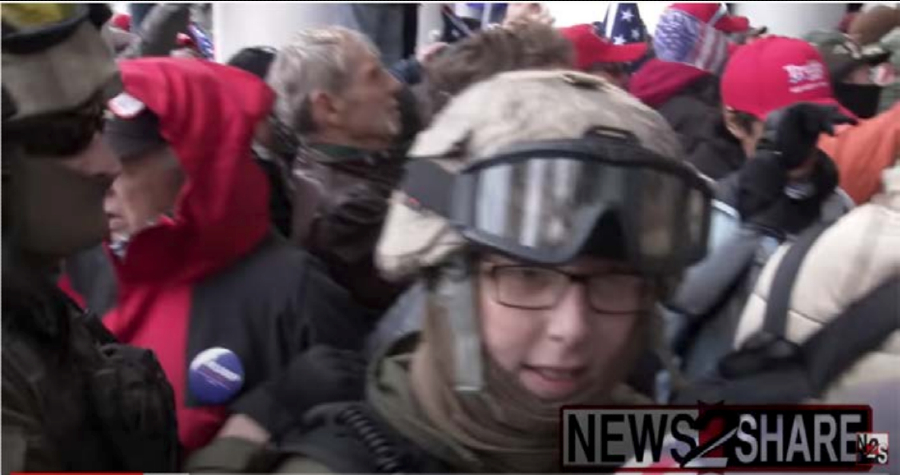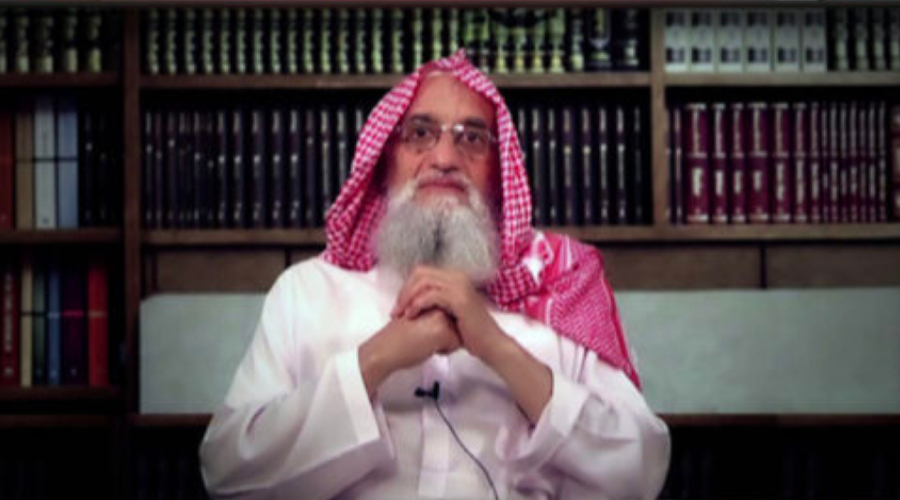The Routinization of Terror: Why Mass Shootings Don’t Make for Effective Terrorism in America
Editor’s Note: Counterterrorism officials often express considerable concern about lone wolf terrorists -- individuals who act without direct ties to an existing group -- because they are difficult to detect and stop. Yet while such individuals can conduct bloody attacks, does the violence help the cause the terrorists purpose to champion?
Published by The Lawfare Institute
in Cooperation With

Editor’s Note: Counterterrorism officials often express considerable concern about lone wolf terrorists -- individuals who act without direct ties to an existing group -- because they are difficult to detect and stop. Yet while such individuals can conduct bloody attacks, does the violence help the cause the terrorists purpose to champion? Marc Meyer, a student at Georgetown University, examines search trends and finds that while there is usually an initial spike after the violence, in the long-term, such attacks do not appear to generate more interest in the attacker’s ideology.
While the reasons behind mass shootings across the United States are varied, these events are sometimes driven by a mass shooter’s desire to bring attention to a cause or an idea, and as a result, to change the conversations, beliefs, or policy decisions of Americans. But how effective are mass shootings for executing this strategy? National web search trends of topics associated with the ideologies espoused by shooters show no significant changes in search traffic over an extended period, suggesting that mass shootings in the United States are not an effective terrorism tactic in so far as the goal is to spread the shooter’s ideology.
Three recent mass killings---the 2009 Foot Hood shooting, the 2012 Wisconsin Sikh temple shooting, and this year’s Charleston church shooting---each demonstrate this conclusion. While each shooter had an ideological goal, their motives, targets, and locations, all varied. Even so, the media coverage and each shootings' long-term political salience, as demonstrated by web search trends, was similarly short.
Recent studies have shown that web searches are useful “for detecting people’s information needs.” Analyzing these web trends can offer valuable insight into public opinion of Internet users. A lack of search traffic, especially after a large-scale event, is a leading indicator of a lack of general interest in a topic.

The search term categories chosen for this project represent the predominant themes of each shooter’s ideology, such as Dylan Roof’s white supremacy memo, or they come from prior statements and news reports about the shootings. US search data pulled from Google’s “Trends” tool shows the volume of search traffic from a three-year period surrounding the event, two years prior and one year after. The data represents the weekly standard deviations from the previous two-year’s norm. As a point of comparison, the same evaluation method was used to analyze the Snowden leaks. The Snowden leaks provide a valuable comparison as an event with significant, continuing impact. This data demonstrates that recent mass shootings did not have a long-term effect on the national conversation. To the extent they had an impact at all, it was relatively short-lived, typically only lasting a little over a month.
 Looking at the figures, there are data points that merit further attention. In the graph for Major Hasan’s pro-Taliban shooting at Fort Hood, the search traffic for the war in Afghanistan only shows marginal increases after the shooting. The major spikes instead came after the Obama administration effectively turned the nation’s attention to the Good War with the announcement of the surge in Afghanistan shortly after the shooting. Following that announcement, by January 2010, search traffic had returned to below its previous volume. The fact that search traffic regarding the war in Afghanistan did not see any significant increase following the shooting, and displayed a similar pattern of decay as other terms, indicates that the subsequent spike was not an effect of the Fort Hood Shooting, but, at most, a confounding variable in a larger trend.
Looking at the figures, there are data points that merit further attention. In the graph for Major Hasan’s pro-Taliban shooting at Fort Hood, the search traffic for the war in Afghanistan only shows marginal increases after the shooting. The major spikes instead came after the Obama administration effectively turned the nation’s attention to the Good War with the announcement of the surge in Afghanistan shortly after the shooting. Following that announcement, by January 2010, search traffic had returned to below its previous volume. The fact that search traffic regarding the war in Afghanistan did not see any significant increase following the shooting, and displayed a similar pattern of decay as other terms, indicates that the subsequent spike was not an effect of the Fort Hood Shooting, but, at most, a confounding variable in a larger trend.
 The effect of Dylan Roof’s attack in a Charleston church on search trends regarding Rhodesia is also noteworthy. Interest in the search term “Rhodesia” was extremely low before the shooting, but effectively skyrocketed post-shooting. However, even this tremendous spike only lasted a short time, and once again quickly faded. While other search terms such as the Confederate States of America and White Supremacy also see small spikes, they quickly fade too.
The effect of Dylan Roof’s attack in a Charleston church on search trends regarding Rhodesia is also noteworthy. Interest in the search term “Rhodesia” was extremely low before the shooting, but effectively skyrocketed post-shooting. However, even this tremendous spike only lasted a short time, and once again quickly faded. While other search terms such as the Confederate States of America and White Supremacy also see small spikes, they quickly fade too.

Finally, the trends surrounding Michael Page’s shooting at the Sikh Temple provide a clear example of how even when search trends spike after a mass shooting, they return to normal within a month. The notable spike in searches for "White Supremacy" in April of 2013 correlates not with Page's shootings, but instead with a series of high profile murders connected to white supremacists around this time.
The data from the three shootings support several important conclusions.
First, the American mass media, and as a result, the American public, simply does not have the attention span to grant a fringe ideology the time it needs to have a significant, long-term effect on the national conversation after only a single event. This is not ideal for a lone-wolf shooter whose goal is to draw attention to his political or social cause. As solo-actors, they lack a support structure for follow on attacks or media releases, which are essential to a coherent political terrorism strategy. The shooters themselves are unable to build and maintain this structure because they act alone, and following the attack, most are killed or commit suicide. Attackers who do survive are prosecuted for their crimes, and the focus of the media quickly turns to justice for the victims. Most mass shooters are then sentenced to death or to lengthy terms, where they, like their professed ideology, quickly fade from the public eye.
The frequency of mass shootings in the United States also dilutes each individual instance’s salience as a policy influencing instrument. A recent study catalogued over 22 mass shootings in the United States in the past five years collectively resulting in over 160 deaths. While the vast majority of these attacks had no clear ideological motive, they have shaped how Americans react to similar events. There is already a national narrative surrounding mass shootings and that narrative quickly draws American’s attention to questions of mental health or gun control, largely ignoring the individual shooter’s ideological motivations. As a result, it is extremely difficult for a lone wolf mass-shooter to focus post-attack attention on their ideology, much less leave a lasting impression.
A specific example is illustrative: Just last month in Roseburg, Oregon, the United States experienced a mass shooting which left 9 dead. Speaking at the White House after the event, President Barack Obama said, “Somehow this has become routine. The reporting has become routine. My response here, from this podium, has become routine.” In many ways, the president is right, and the Google Trends data from this project bears witness to the routinization of mass killings in the United States, even if those attacks are not just random, but are politically motivated.
A final possible explanation for the inability of solo mass shootings to effect political change has to do with the nature of mass shootings themselves, as opposed to other forms of terrorist violence. In an age of ISIS snuff films and airline bombings, mass shootings seem more banal than other terror techniques. Coordinated city-wide attacks such as those in Paris, and bombings and beheadings drive media coverage in a way that individual shootings are unable to replicate. As people are exposed to more and more sensational forms of terrorism, they become de-sensitized to other, more routine violent actions.
Achieving tactical success in a mass shooting is relatively easy, as in the United States guns are not difficult to acquire and unarmed, unprepared civilians are not particularly difficult to target. It is a much more difficult task to translate that tactical achievement into strategic success by bringing national attention to, and converting followers to, the shooter’s chosen ideology. As shown by this data, mass shootings, as all too common tragedies, are an ineffective tool for those seeking to bring their ideology into the national conversation of the United States.
***
Marc Meyer is a master's candidate at Georgetown University's Security Studies Program, where he focuses on terrorism, sub-state violence, and domestic extremism. He currently works for the Center for Security Studies and is the course manager for Georgetown's Terrorism and Counterterrorism MOOC.





